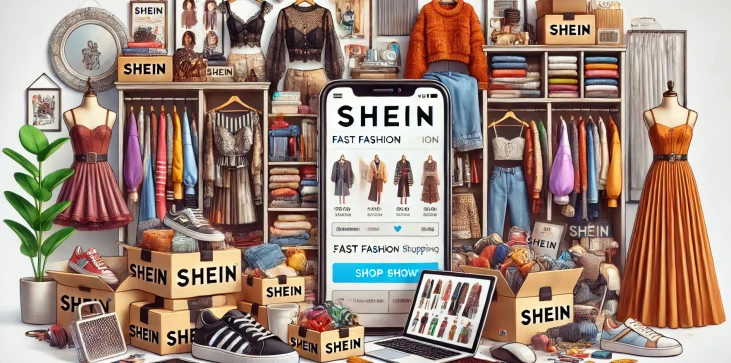
Shein, a name synonymous with affordable and trendy clothing, has disrupted the fashion industry in ways that few could have predicted. Founded in China in 2008, this fast fashion brand capitalized on the demand for stylish, budget-friendly outfits. Today, it ships to over 220 countries, attracting millions of customers worldwide with its extensive catalog of clothing, accessories, and home goods. But how has Shein managed to achieve such rapid growth, and what are the pros and cons of its business model? In this article, we’ll dive deep into the factors behind Shein’s success and its impact on the global fashion landscape.
Shein operates as an online-only retailer, eliminating the overhead of physical stores, which allows them to keep prices low. The brand's business model revolves around identifying fashion trends quickly and translating them into ready-to-wear items available for purchase almost immediately. Through its efficient supply chain and partnerships with manufacturers, Shein can produce clothing at breakneck speed, often faster than traditional fast fashion brands like Zara or H&M. This "on-demand" production model ensures that Shein stays ahead of trends, keeping consumers coming back for the latest styles.
One of the primary reasons Shein has become a favorite among younger consumers, particularly Gen Z, is its emphasis on affordability and variety. Gen Z shoppers are known for being trend-conscious but also value-minded, and Shein offers thousands of styles at extremely low prices. Additionally, Shein leverages social media platforms like TikTok and Instagram, where influencers and everyday users frequently share their Shein "hauls," creating a viral marketing loop that feeds the brand's growth. Shein’s user-friendly app and seamless shopping experience further enhance its appeal to younger audiences.
While Shein’s business model has proven highly effective, it also raises ethical concerns, particularly about sustainability. Fast fashion, by its nature, encourages mass consumption, which can contribute to environmental degradation. Critics argue that Shein’s rapid production cycle leads to excessive waste and overuse of resources. Additionally, concerns have been raised about the working conditions in Shein’s supply chain. While the company has taken steps toward greater transparency, such as releasing sustainability reports, questions remain about the long-term environmental impact of its operations.
Shein’s growth shows no signs of slowing down. The brand has expanded into new markets, including the U.S., Europe, and Latin America, adapting its product offerings to cater to diverse consumer preferences. With its continuous investment in technology and data analytics, Shein can predict fashion trends with remarkable accuracy. However, as the fashion industry becomes more conscious of sustainability and ethics, Shein may face pressure to adopt more eco-friendly practices. The future success of the brand will depend on its ability to balance profitability with responsibility.
Shein has fundamentally altered the fashion industry by making trendy, affordable clothing accessible to consumers worldwide. Its rapid production model, combined with its ability to tap into social media trends, has made it a leader in fast fashion. However, the brand faces increasing scrutiny over its environmental and ethical practices. As the demand for sustainability in fashion grows, Shein's challenge will be to adapt without compromising its business model. Whether it will successfully navigate these challenges remains to be seen, but for now, Shein continues to dominate the fast fashion scene.

Shein's target demographic, particularly Gen Z, spends a significant amount of time on social media platforms like Instagram and TikTok. By leveraging influencer marketing and viral "haul" videos, Shein creates buzz around its products, attracting more shoppers without traditional advertising. This user-generated content builds authenticity and increases brand awareness in a way that resonates with younger consumers.
Shein operates on an agile supply chain model, meaning it works closely with manufacturers to minimize lead times. Instead of producing massive quantities of each design upfront, Shein makes small batches of clothing and scales up production based on consumer demand. This model reduces waste and allows the brand to quickly respond to trends without overproducing items.
Shein has recently begun releasing sustainability reports to provide transparency about its environmental impact. The brand has pledged to reduce carbon emissions and improve working conditions in its supply chain, though critics argue that these efforts may not be enough given the volume of clothing it produces. The company also promotes recycling programs and eco-friendly initiatives, but the fast fashion business model itself remains inherently unsustainable.